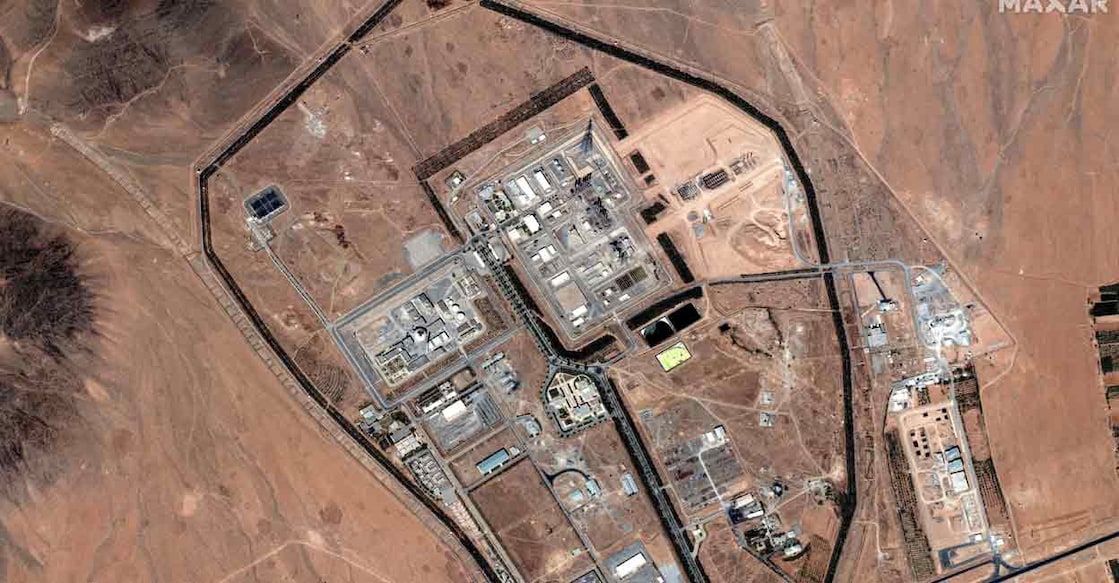Iran's new enrichment site at Isfahan among nuclear facilities hit, says IAEA amid fallout risk

Mail This Article
As its military campaign against Iran intensifies, Israel says it is committed to dismantling Tehran’s nuclear capabilities—while also seeking to avoid triggering a regional nuclear disaster in an area home to tens of millions and critical to global oil supplies.
Tensions spiked further on Thursday after the Israeli military mistakenly announced it had struck a site in Bushehr, home to Iran’s only operational nuclear power plant. The claim, later retracted, briefly raised fears of a catastrophe in the Gulf region.
What has Israel hit so far?
Israel has confirmed strikes on key Iranian nuclear sites, including Natanz, Isfahan, Arak (Khondab), and targets in Tehran. These attacks, Israeli officials say, are aimed at preventing Iran from acquiring an atomic weapon—an accusation Iran firmly denies.
The International Atomic Energy Agency (IAEA) reported damage to uranium enrichment infrastructure at Natanz, the Uranium Conversion Facility at Isfahan, and centrifuge production sites in Karaj and Tehran.
Israel also said it targeted the heavy-water research reactor at Arak, a site capable of producing plutonium, which, like enriched uranium, can be used in nuclear weapons. The IAEA confirmed that Arak had been hit, though the facility was not operational and no radiological leaks were reported.
The head of the IAEA, Rafael Grossi, said on Thursday that Iran’s planned new uranium enrichment facility—announced just before Israel launched its airstrikes—was to be located in Isfahan. The facility would have become Iran’s fourth operational enrichment site.
The IAEA had planned to inspect the new plant but was forced to postpone its visit due to the start of the Israeli military operation. Grossi confirmed that four structures at the Isfahan nuclear complex were damaged, including the Uranium Conversion Facility that transforms "yellowcake" uranium into the uranium hexafluoride feedstock for centrifuges so that it can be enriched.
So far, no underground spaces—where most of Iran’s highly enriched uranium is believed to be stored—appear to have been affected. However, inspections remain on hold.
“The Isfahan complex is huge,” Grossi said. “We were going to inspect the new site immediately, but the inspection had to be postponed due to military action.”
The IAEA confirmed that one enrichment plant had been destroyed in the strikes and another rendered inoperative after its power supply was knocked out.
Are there contamination risks?
Experts say the fallout risk from strikes so far remains low. Peter Bryant, a radiation protection and nuclear policy expert at the University of Liverpool, noted that most of the targeted facilities were either not operational or located underground.
“Uranium is only dangerous if inhaled, ingested, or otherwise introduced into the body, especially at low enrichment levels,” Bryant explained. “These facilities are designed to contain such risks.”
Darya Dolzikova, a nuclear policy researcher at RUSI, said the primary concern at enrichment plants lies in uranium hexafluoride (UF6), which can produce hazardous chemicals if it reacts with moisture in the air. However, the extent of any release would depend heavily on weather conditions and whether the site is above ground.
“In high winds, material can travel farther but disperses more widely,” she said. “With underground sites, the risk of widespread contamination is far lower.”
What if a nuclear reactor is hit?
While strikes on enrichment sites are viewed as chemically hazardous but manageable, experts warn that damage to a nuclear power reactor like the one in Bushehr could be catastrophic.
“Attacks on large power reactors are a different story,” said Richard Wakeford, Honorary Professor of Epidemiology at the University of Manchester. “You’re potentially looking at the release of radioactive elements into the air or sea.”
James Acton of the Carnegie Endowment for International Peace said an attack on Bushehr “could cause an absolute radiological catastrophe,” though he added that attacks on enrichment facilities were unlikely to have major off-site impacts.
Why are Gulf states worried?
Gulf nations are particularly concerned about potential fallout from Bushehr because of the risk to regional desalination plants, which supply the majority of drinking water in the area.
In Qatar and Bahrain, desalination provides 100% of potable water. The UAE relies on it for over 80% of its supply, and even in Saudi Arabia, roughly 50% of drinking water comes from desalination, according to recent data.
“If a targeted attack, oil spill, or natural disaster were to disrupt desalination plants, hundreds of thousands could lose access to freshwater almost instantly,” warned Nidal Hilal, Director of the Water Research Center at NYU Abu Dhabi.
Countries like Saudi Arabia and the UAE have multiple coastlines and water sources, but smaller Gulf states such as Kuwait, Bahrain, and Qatar depend entirely on the Gulf's waters—heightening the stakes in the event of nuclear contamination.

